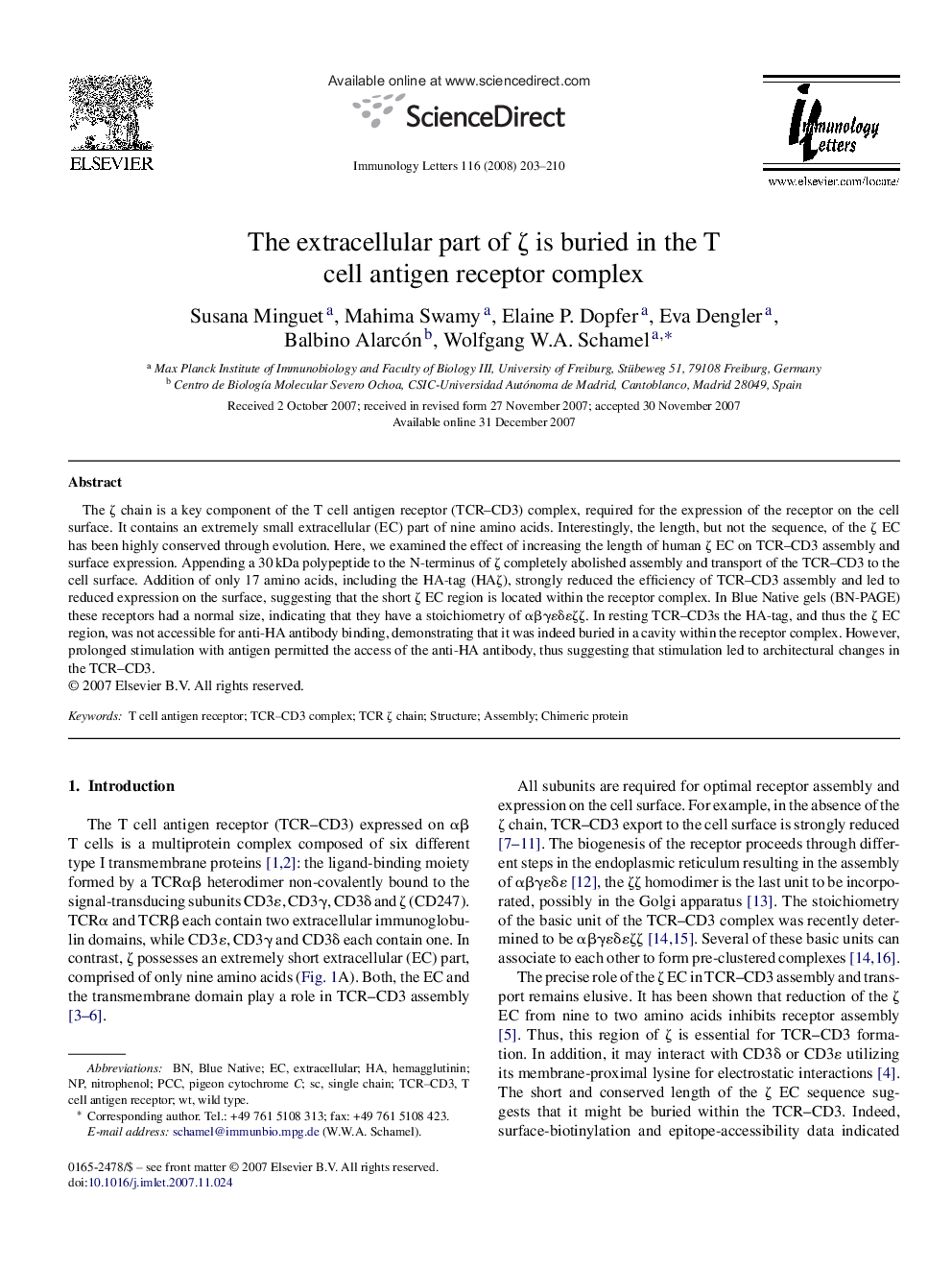| Article ID | Journal | Published Year | Pages | File Type |
|---|---|---|---|---|
| 3356207 | Immunology Letters | 2008 | 8 Pages |
The ζ chain is a key component of the T cell antigen receptor (TCR–CD3) complex, required for the expression of the receptor on the cell surface. It contains an extremely small extracellular (EC) part of nine amino acids. Interestingly, the length, but not the sequence, of the ζ EC has been highly conserved through evolution. Here, we examined the effect of increasing the length of human ζ EC on TCR–CD3 assembly and surface expression. Appending a 30 kDa polypeptide to the N-terminus of ζ completely abolished assembly and transport of the TCR–CD3 to the cell surface. Addition of only 17 amino acids, including the HA-tag (HAζ), strongly reduced the efficiency of TCR–CD3 assembly and led to reduced expression on the surface, suggesting that the short ζ EC region is located within the receptor complex. In Blue Native gels (BN-PAGE) these receptors had a normal size, indicating that they have a stoichiometry of αβγɛδɛζζ. In resting TCR–CD3s the HA-tag, and thus the ζ EC region, was not accessible for anti-HA antibody binding, demonstrating that it was indeed buried in a cavity within the receptor complex. However, prolonged stimulation with antigen permitted the access of the anti-HA antibody, thus suggesting that stimulation led to architectural changes in the TCR–CD3.
